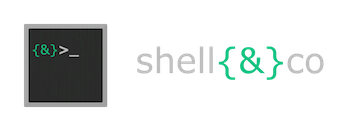No problem to find the largest top 10 files and directories on a UNIX system with this command :
du -hsx * | sort -rh | head -10
Output :
536G home 1.3G usr 1.2G var 756M lib 123M boot 40M root 24M sbin 22M upd 12M bin
References
NAME
du – estimate file space usage
SYNOPSIS
du [OPTION]… [FILE]…
du [OPTION]… –files0-from=F
DESCRIPTION
Summarize disk usage of each FILE, recursively for directories.
Mandatory arguments to long options are mandatory for short options
too.
-a, –all
write counts for all files, not just directories
–apparent-size
print apparent sizes, rather than disk usage; although the
apparent size is usually smaller, it may be larger due to holes
in (‘sparse’) files, internal fragmentation, indirect blocks,
and the like
-B, –block-size=SIZE
use SIZE-byte blocks
-b, –bytes
equivalent to ‘–apparent-size –block-size=1’
-c, –total
produce a grand total
-D, –dereference-args
dereference FILEs that are symbolic links
–files0-from=F
summarize disk usage of the NUL-terminated file names specified
in file F
-H
like –si, but also evokes a warning; will soon change to be
equivalent to –dereference-args (-D)
-h, –human-readable
print sizes in human readable format (e.g., 1K 234M 2G)
–si
like -h, but use powers of 1000 not 1024
-k
like –block-size=1K
-l, –count-links
count sizes many times if hard linked
-m
like –block-size=1M
-L, –dereference
dereference all symbolic links
-P, –no-dereference
don’t follow any symbolic links (this is the default)
-0, –null
end each output line with 0 byte rather than newline
-S, –separate-dirs
do not include size of subdirectories
-s, –summarize
display only a total for each argument
-x, –one-file-system
skip directories on different file systems
-X FILE, –exclude-from=FILE
Exclude files that match any pattern in FILE.
–exclude=PATTERN
Exclude files that match PATTERN.
–max-depth=N
print the total for a directory (or file, with –all) only if it
is N or fewer levels below the command line argument;
–max-depth=0 is the same as –summarize
–time
show time of the last modification of any file in the directory,
or any of its subdirectories
–time=WORD
show time as WORD instead of modification time: atime, access,
use, ctime or status
–time-style=STYLE
show times using style STYLE:
full-iso, long-iso, iso, +FORMAT FORMAT is interpreted like
‘date’
–help
display this help and exit
–version
output version information and exit
SIZE may be (or may be an integer optionally followed by) one of fol-
lowing: kB 1000, K 1024, MB 1000*1000, M 1024*1024, and so on for G, T,
P, E, Z, Y.
PATTERNS
PATTERN is a shell pattern (not a regular expression). The pattern ?
matches any one character, whereas * matches any string (composed of
zero, one or multiple characters). For example, *.o will match any
files whose names end in .o. Therefore, the command
du --exclude='*.o'
will skip all files and subdirectories ending in .o (including the file
.o itself).
